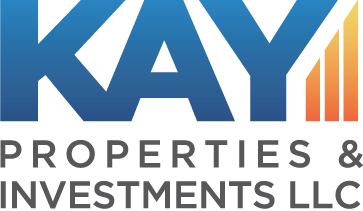By Betty Friant, Senior Vice President at Kay Properties & Investments and The Kay Properties Team
Becoming a serious investor involves a significant learning curve. There are many acronyms used in the investment world that you will need to know and understand to find success as an investor. Here are some common acronyms to file away in your long-term memory.
DST
Delaware Statutory Trust or DST is an entity used to hold title to investment real estate. A DST is a powerful real estate planning tool. It permits fractional ownership where multiple investors can share ownership of a single property or an entire portfolio of properties. A DST is often paired with the 1031 Exchange. Pairing these two entities together allows for individual investors to diversify* their investment dollars into multiple properties and potentially mitigate concentration risk of over-concentration in their investment properties. This can potentially be accomplished by investing in DSTs with properties in different geographies, in many of the asset classes, and with various property managers, asset managers, and sponsoring companies.
TIC
Tenancy in Common or TIC is an investment arrangement where two or more individuals share ownership rights of a property which qualifies under the rules to be used as like-kind in a 1031 Exchange. TIC investments must comply with IRS Rev Proc 2002-22 which has a limit on the number of investors. This gives the TIC entity unique challenges where each investor is named on the mortgage and each investor has the right to vote on decisions concerning the property which can be cumbersome in a co-ownership arrangement. This property can be commercial or residential. TIC allows investors to own different percentages of a property. Tenants in common can leave their share of the property to anyone of their choice upon their death.
NNN
Triple net lease investing or NNN is a lease agreement on a property. This is a lease agreement where the tenant promises to pay all expenses of the property. This includes real estate taxes, building insurance, and maintenance. Typically, these are expenses of the landlord. However, in a NNN lease agreement, the tenant pays these expenses along with rent and utility fees. Tenants generally pay a lower rent charge by taking on these additional expenses. Triple net leases have become popular as they have the potential to provide low-risk steady income to investors.
1031s
Section 1031 is an Internal Revenue Code. It is an IRC provision that allows individuals to defer tax on qualifying exchanges of like-kind real estate. To utilize this tax strategy investors must take certain steps when selling and buying real estate. The replacement real estate must be like-kind, tax must be paid on any boot in the year of the exchange, and replacement real estate must be identified within 45 days and acquired within 180 days to utilize the 1031 exchange.
QI
A QI or Qualified Intermediary is an accommodator or facilitator that works as an entity that facilities Internal Revenue Code Section 1031 tax-deferred exchanges. A Qualified Intermediary is an individual who enters into a written agreement with the taxpayer of a property. The QI acquires the relinquished property from the taxpayer, transfers the relinquished property to the buyer, acquires the replacement property from the seller, or transfers the replacement property to the taxpayer.
PPM
PPM or a Private Placement Memorandum is a document that divulges everything an investor needs to know before investing in a Regulation D Offering. The PPM is very beneficial to an investor as it details the investment opportunity, disclaims legal liabilities, and explains the risk of losses.
Knowing and understanding these acronyms will help in placing you on a path of success in the investment world. You might want to keep this list of the alphabet soup of acronyms handy as you research the world of investment real estate.
*Diversification does not guarantee profits or protect against losses.
